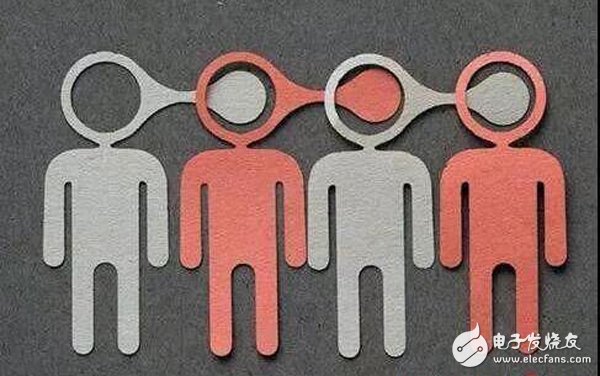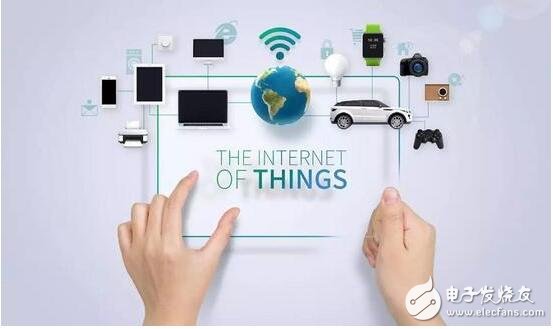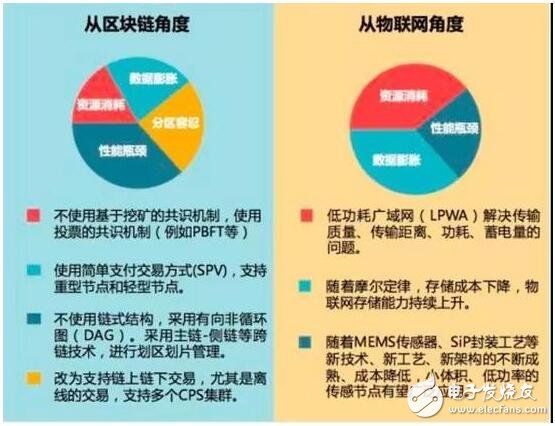In recent years, the blockchain has taken advantage of the bitcoin's east wind, taking the central commanding heights in one fell swoop, and has been named the “information Internet†to the “value Internet†changer! Its financial, game, food traceability, content In many fields, such as copyright, the city has been attacked by the high threshold, and it is known for its high technology, openness, traceability, and difficulty in tampering.
First, the hot blockchain is welcoming

Over time, more and more technology companies have begun to get involved in the blockchain field, and the entire blockchain industry chain has also rapidly improved, similar to the AI ​​development boom of the year, if you do not do or do not mention the blockchain Sorry to mix in the rivers and lakes.
Recently, the White Paper on China's Blockchain Industry published by the Ministry of Industry and Information Technology pointed out that as of the end of March 2018, the number of blockchain companies in China with blockchain business as its main business has reached 456, with geographical distribution and industrial agglomeration effect. obvious.
The report shows that the blockchain industry ecology has taken shape. From upstream hardware manufacturing, infrastructure, security services, downstream industrial technology application services, to industry investment and financing, media, and talent services to ensure industrial development, companies in various fields have been basically complete. At present, Beijing, Shanghai, Guangdong and Zhejiang have concentrated 80% of the blockchain companies in the country.
However, the development of blockchain is not always smooth, and there are still many risks in the current industry development. For example, compliance risk: In the early stage of blockchain development, there have been a number of projects that illegally raise funds and pyramid schemes through ICO. Technical risks: There are some bottlenecks in the development of blockchain technology, and the problems of network expansion and transaction congestion need further solve.
In addition, the abuse of blockchain technology has also triggered some social contradictions, such as yellow, block, poison and money laundering, and the application of blockchain technology in the black industry chain has brought about a huge negative social impact. Therefore, a full-scale outbreak of the blockchain is not a blessing.
Second, the rational Internet of Things encounters bottlenecks in development

Compared with the current development of the blockchain, the development of the IoT industry chain that has been favored by the audience has become more rational, and even the application of the Internet of Things in some areas has been cold. With the maturity of technologies such as cloud computing, big data, and artificial intelligence, the Internet of Things has also opened up a rapid development model. However, due to the inherent fragmentation and large-scale nature of the Internet of Things, it has encountered the development bottleneck of “three lows†and “three highsâ€!
1. Three low: low efficiency, low utilization, low security
The underlying protocols are not unified, and the scenario linkage efficiency is low;
The Internet of Things data is complex and the data reuse rate is low;
IoT equipment is simple and has low security protection performance;
2. Three high: high cost, high industry barriers, high operational difficulty
Large-scale application is difficult to form, and the implementation cost is high
The scene covers all walks of life, and the barriers are difficult to break through.
The industrial chain is fragmented and difficult to operate.
Specifically, as in the previous article, "Internet of Things and Blockchain: What is the combination of heaven and earth?" The development of hardware technology is limited, multi-standards are incompatible, data storage tests, data analysis mining, and industry scenarios. Business model, security protection and other issues.
Whether these problems can be solved by means of blockchain, is it an opportunity challenge or a concept hype? We not only need to think calmly, but also need to constantly combine industry and technology trends, and constantly adjust our thinking in practice to make a correct judgment.
Third, the "object chain network" integration difficulties and improvement ideas

The development of any technology and the expansion of the territory will experience various obstacles. The two frontier trends of the blockchain and the Internet of Things are integrated, and application landing is even more difficult!
First, in terms of resource consumption. IoT devices generally have problems such as low computing power, weak networking capabilities, and short battery life. Bitcoin's Workload Proof Mechanism (PoW) is too resource intensive and obviously not suitable for deployment in IoT nodes, and may be deployed in servers such as IoT gateways. Secondly, the blockchain 2.0 technology such as Ethereum is also PoW+PoS, which is gradually switching to PoS. Distributed architectures require a consensus mechanism to ensure the ultimate consistency of data. However, for a centralized architecture, the consumption of resources cannot be ignored.
Second, in terms of data expansion. A blockchain is a data storage technology that can only be attached and cannot be deleted. As the blockchain continues to grow, does the IoT device have enough storage space? For example, Bitcoin runs to date and requires hundreds of Gigabytes of physical storage space.
Third, in terms of performance bottlenecks. The traditional Bitcoin transaction is 7 pens/second, plus consensus confirmation, it takes about 1 hour to write to the blockchain. This delay caused feedback delay, alarm delay, and delay-sensitive industrial Internet. Not feasible.
Fourth, in terms of zone tolerance. The Industrial Internet of Things emphasizes that nodes are “always onâ€. However, it is common for ordinary IoT nodes to fail and frequently join and exit the network. It is easy to generate network fluctuations that consume a lot of network bandwidth, and even “network splittingâ€.
In response to the above difficulties, in a speech, China Science and Technology Research Institute blockchain expert Qing Su De shared the improvement ideas of the Internet of Things + blockchain from the perspective of blockchain and Internet of Things.

1. From the perspective of the blockchain:
For resource consumption, a consensus mechanism based on mining and resource consumption can be used, and a consensus mechanism for voting (such as PBFT) can be used to reduce the notification of resource consumption, and the transaction speed can be effectively improved and the transaction delay can be reduced. Of course, there will be some loss in the scalability of the node, which requires a trade-off for business applications.
For data bloat, transaction records can be compressed by the Merkel tree using the Simple Payment Transaction (SPV). Support heavy-duty nodes and lightweight nodes on the system architecture. The heavy node stores the full amount of data in the blockchain. The light node only stores the 256 hash value of the root node of the Merkel tree, and only performs the verification work.
For the performance bottleneck, there have been many improvements to the blockchain software platform for the Internet of Things. For example, IOTA proposes not to use a chain structure, using a directed acyclic graph (DAG) data structure, on the one hand to improve transaction performance, on the other hand, it also has anti-quantum attack characteristics. Lisk adopts the cross-chain technology such as main chain-sidechain to carry out the management of zone sharding, and has also made many breakthroughs in performance.
For partition tolerance, for possible network fragmentation, you can choose to support chain-on-chain transactions, especially offline transactions, and support multiple CPS clusters during system design.
2. From the perspective of the Internet of Things:
For resource consumption, with the development of low-power wide area network (LPWA) technologies such as eMTC, NB-IoT, and LoRA, the problems of transmission quality, transmission distance, power consumption, and power storage will be gradually solved.
For data expansion, according to Moore's Law and Super Moore's Law, storage costs are declining, and IoT storage capacity continues to rise.
For performance bottlenecks, with the maturity and cost reduction of new technologies, new processes, and new technologies such as MEMS sensors and SiP packaging processes, small-volume, low-power sensor nodes are expected to be widely used.
Therefore, the combination of the two needs to be exerted from different levels. On the one hand, the two can follow the original technical route and each is “politicalâ€; on the other hand, explore the combination points, such as edge computing, smart contracts, and Internet of Things data. Trading market, construction of the operating system environment of the chain of goods.
In fact, whether it is the feng shui or the bubble, the combination of the two popular fields of the Internet of Things and the blockchain, the “chain of thingsâ€, will bring more imagination to the entire social industry. What we need to do is to follow the trend. For, move with the wind!
UPS Accessories,Remote Monitor Card,Smart Card,Intelligent Card
Shenzhen Unitronic Power System Co., Ltd , https://www.unitronicpower.com